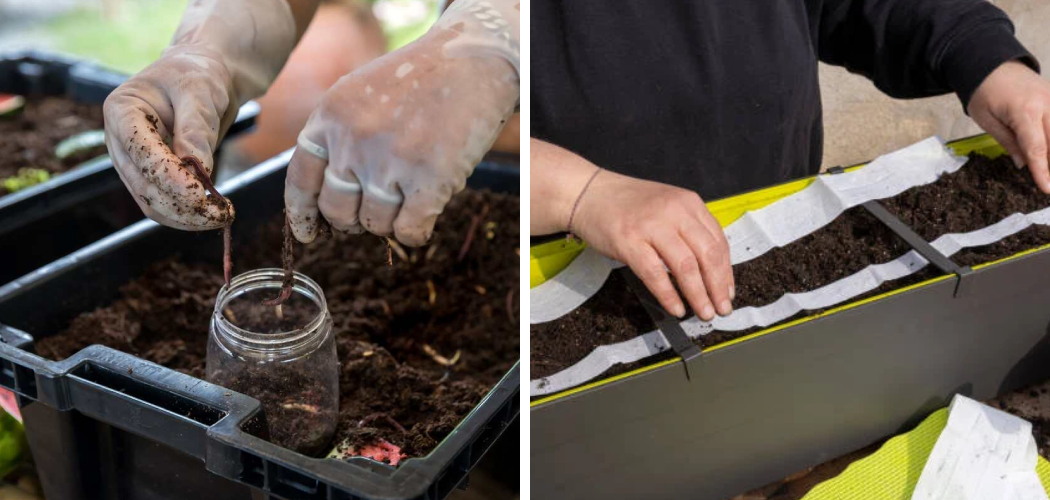One way to keep a worm bin warm in winter is by insulating it with materials such as straw or blankets. Insulating the bin helps to retain heat and keep the worms at a comfortable temperature.
Additionally, placing the bin in a warm location such as a basement or garage can also help maintain the temperature. It is important to monitor the temperature regularly and make adjustments as needed to ensure the worms are not exposed to extreme cold or heat.
By following these steps, you can ensure that your worm bin remains warm during the winter months.

How to Keep Worm Bin Warm in Winter: Step by Step Guide
Preparing Your Worm Bin For Winter
Preparing your worm bin for winter is crucial to ensure the survival of your earthworms. One way to keep your worm bin warm is by insulating it properly. To do this, you can add bedding to your worm bin. Bedding materials like shredded newspaper or cardboard provide insulation by trapping heat.
Remember to moisten the bedding before adding it to the bin, as worms thrive in a moist environment. Additionally, you can also cover the worm bin with a thick layer of straw or leaves to further insulate it. This will help retain heat and shield the worms from the cold temperatures.
By following these simple steps, you can maintain a warm environment in your worm bin throughout the winter months and keep your worms healthy and active.
Providing Heat Sources For Your Worm Bin
Providing heat sources for your worm bin in winter is crucial to maintain optimal conditions. The first option is using a heat mat, which can be placed underneath the bin to provide steady warmth. Another method is using a light bulb, preferably a low-wattage one, to emit heat without causing any harm to the worms.
Lastly, a heating pad can be utilized by placing it underneath the bin and setting it to a low temperature. These heat sources will ensure that the worm bin remains warm and cozy throughout the winter months, creating an ideal environment for the worms to thrive.
Take care to monitor the temperature regularly to prevent overheating and ensure the well-being of your composting buddies. Keep your worm bin warm, and your worms will continue to work their magic in the colder months.
Monitoring And Maintaining Temperature
Maintaining temperature in your worm bin during winter is crucial for their survival. Use a thermometer to monitor the temperature regularly. Adjust bedding and moisture levels to create a warm environment for the worms. Too much moisture can lead to colder temperatures, while dry bedding can’t retain heat.
Ensure proper insulation and protection against extreme cold. Controlling sun exposure is also important. Place the worm bin in a sunny spot during the day, and move it to a sheltered area at night to prevent freezing. By following these measures, you can keep your worm bin warm and provide a comfortable habitat for the worms throughout the winter season.
Frequently Asked Questions Of How To Keep Worm Bin Warm In Winter
How Can I Keep My Worm Bin Warm In Winter?
To keep your worm bin warm in winter, insulate the bin with materials such as straw or an old blanket. Avoid placing the bin directly on the ground and move it to a sheltered area, like a garage or basement.
Additionally, you can add a heat source like a heat mat or a light bulb inside the bin to provide some warmth for the worms.
What Is The Ideal Temperature For A Worm Bin In Winter?
The ideal temperature for a worm bin in winter is between 55°f and 77°f (13°c and 25°c). This temperature range ensures that the worms remain active and continue to break down organic matter. Monitor the temperature regularly and make adjustments, such as adding insulation or a heat source, to maintain the ideal conditions for the worms.
Can I Use A Heating Pad To Keep My Worm Bin Warm In Winter?
Yes, a heating pad can be used to keep a worm bin warm in winter. Place the heating pad under the bin, set it to a low temperature, and monitor the temperature regularly. However, make sure that the heating pad is safe for use with organic materials and does not produce excessive heat that could harm the worms.
Conclusion
To keep your worm bin warm in winter, it is essential to create a suitable environment for your composting worms. By implementing a few simple strategies, you can ensure the well-being and productivity of your worm colony even during the coldest months.

Firstly, insulating your worm bin with materials like straw, blankets, or foam will help to retain heat. Additionally, placing the bin in a sheltered location or using a heat source, such as a heating pad or a heat lamp, can provide the necessary warmth.
Monitoring the temperature regularly is crucial, as excessive heat can harm the worms. Moreover, feeding your worms a balanced diet of carbon-rich materials, like shredded paper or dry leaves, will generate heat during decomposition. This helps to maintain a suitable temperature in the worm bin.
Remember to avoid overfeeding your worms, as this can lead to excessive heat buildup and potential issues with the bin’s overall health. Regularly checking the moisture levels and adjusting as necessary is also important. By following these guidelines, you can ensure the success of your worm bin throughout the winter season.
Happy composting!

